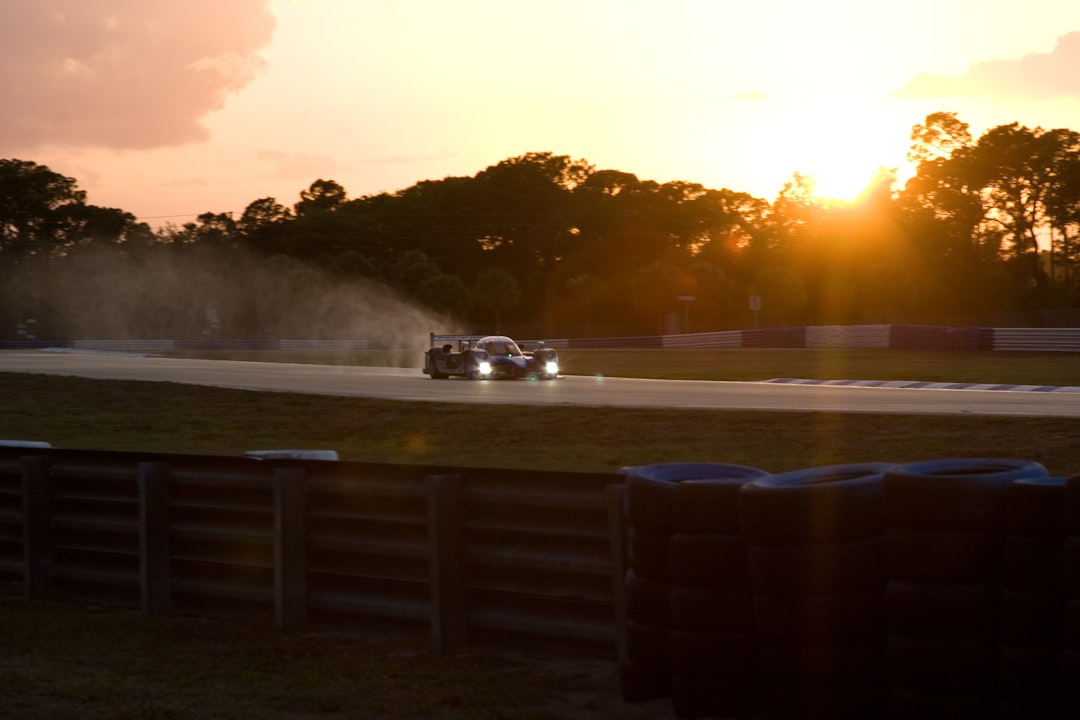Racing Car Guides: Avoid 2025 Mistakes
Mastering the Track: A Beginner’s Guide to Racing Car Setup
If you’re looking for racing car guides that turn first laps into fast laps, you’re in the right place. This quick-start handbook strips away the fluff and focuses on the decisions that matter most to new racers—whether you drive a sim rig, a track-day special, or a purpose-built machine.
Key points you’ll master:
- Safety First – gear and car prep that save lives (and wallets).
- Systematic Setup – change one thing, test, record, repeat.
- Critical Adjustments – suspension, aero, brake bias, and tires.
- Preparation – inspections and maintenance that stop DNFs.
- Avoiding Rookie Traps – the mistakes that cost time and money.
- Driver Feedback – using what you feel to drive data-based tweaks.
Many newcomers believe pure “seat time” fixes everything, but 99 % of amateur racers never set a goal for each session. This guide shows how a goal-driven, scientific approach yields predictable gains and bigger smiles.
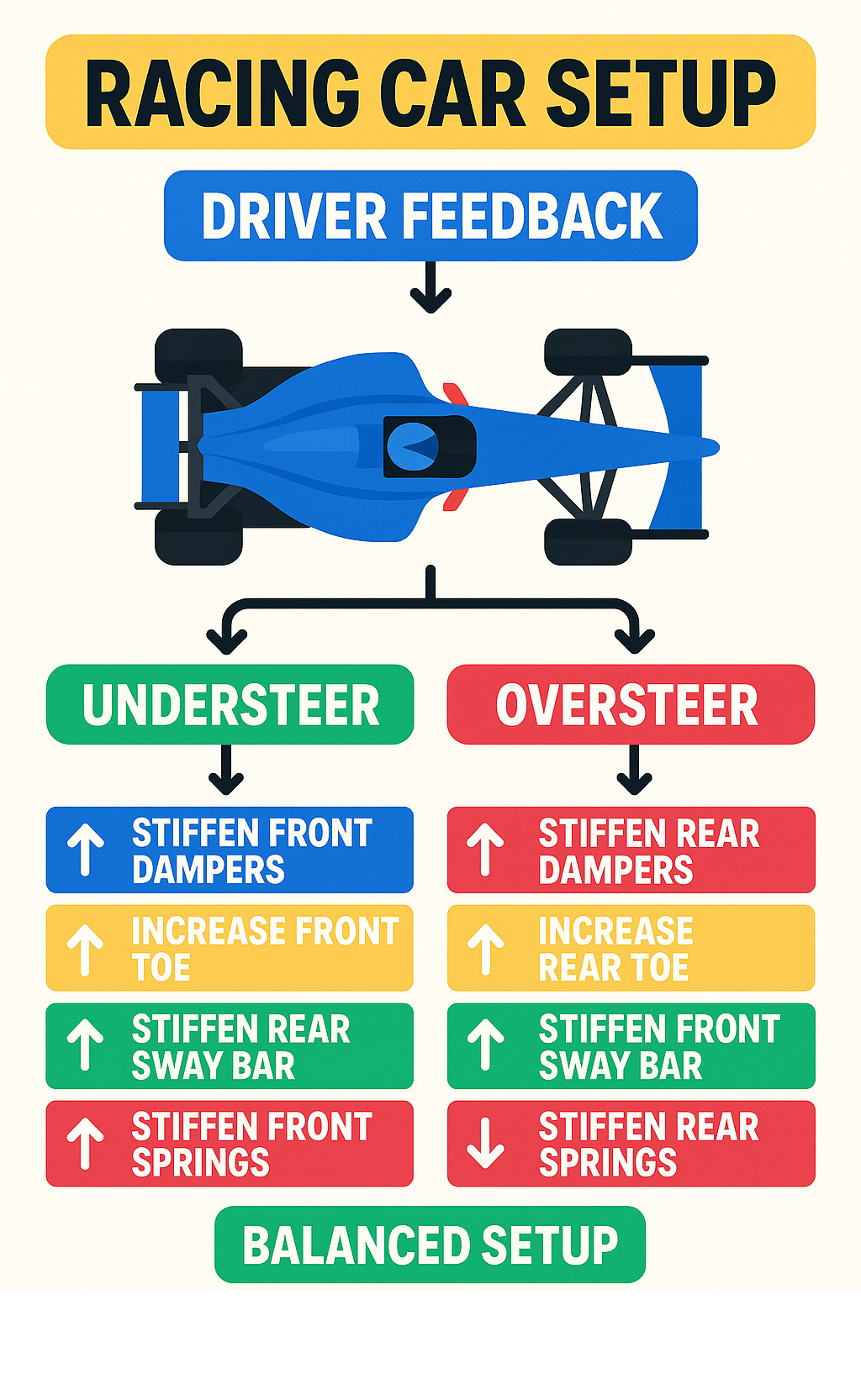
Essential racing car guides resources:
Safety First: The Non-Negotiable Foundation of Racing
Racing is thrilling—but only when you walk away to tell the tale. Treat safety as the concrete slab on which every lap is built.
Critical Driver Safety Gear
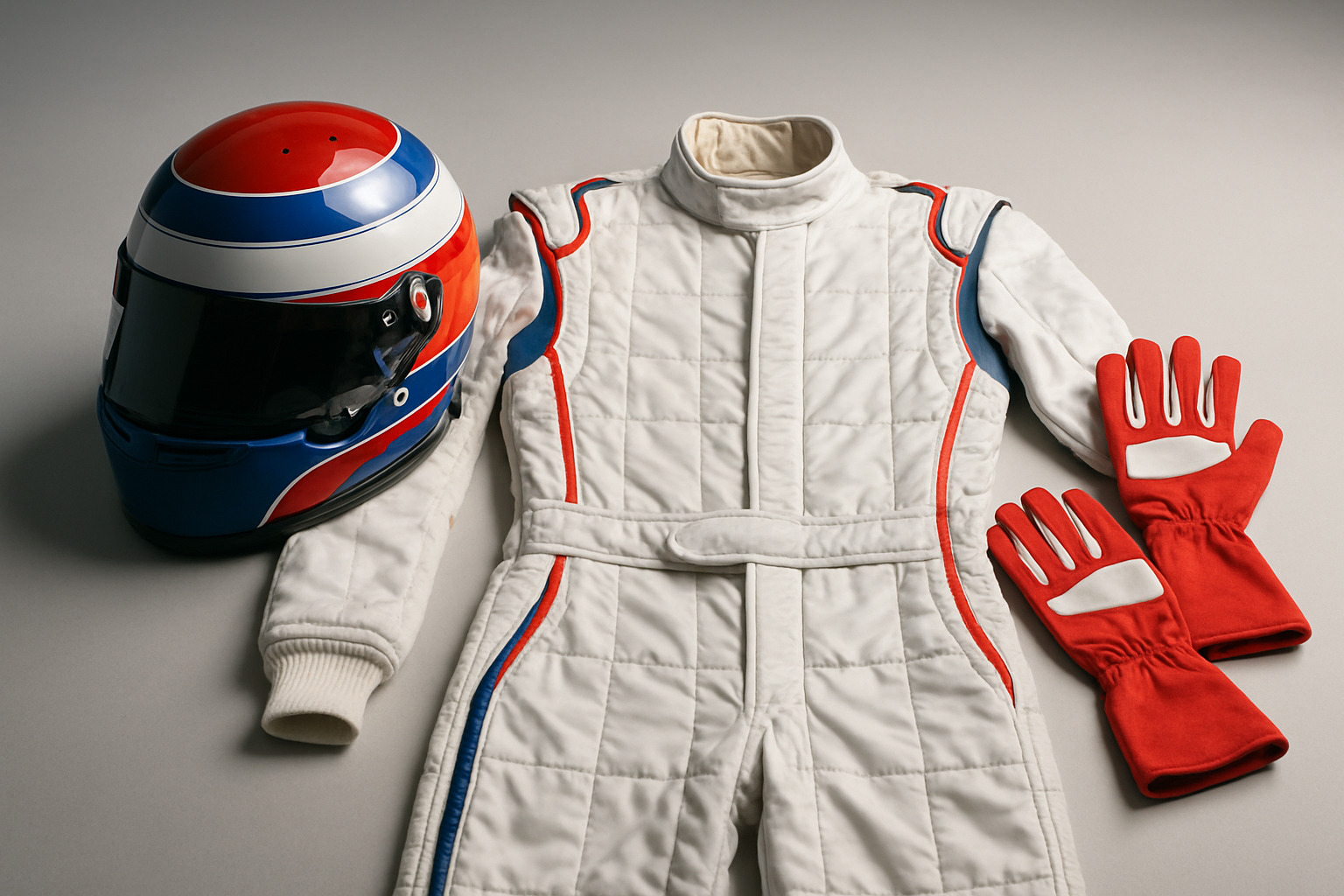
- Helmet + HANS – protects head and neck from impacts.
- Fire-retardant suit, gloves, shoes – buy FIA/SFI-rated; seconds matter.
- Racing harness – 5-, 6-, or 7-point to keep you planted under G-loads.
Build skills risk-free with Racing Simulator Training before strapping into the real thing.
Essential Car Safety Mods
- Roll cage / roll bar – weld-in or bolt-in; ties belts and seat to a rigid shell.
- Fixed-back racing seat – correctly mounted to cage structure.
- On-board fire system or quick-release extinguisher within reach.
- Clear gauges & warning lights – catch oil-pressure or temp spikes early.
- Reinforced belt anchor points – factory spots often aren’t enough.
Maintain everything with our Sports Car Maintenance checklist so safety gear works when it counts.
From Garage to Grid: Building and Preparing Your Car
Turning a street car into a track weapon is rewarding—but only if you plan realistically.
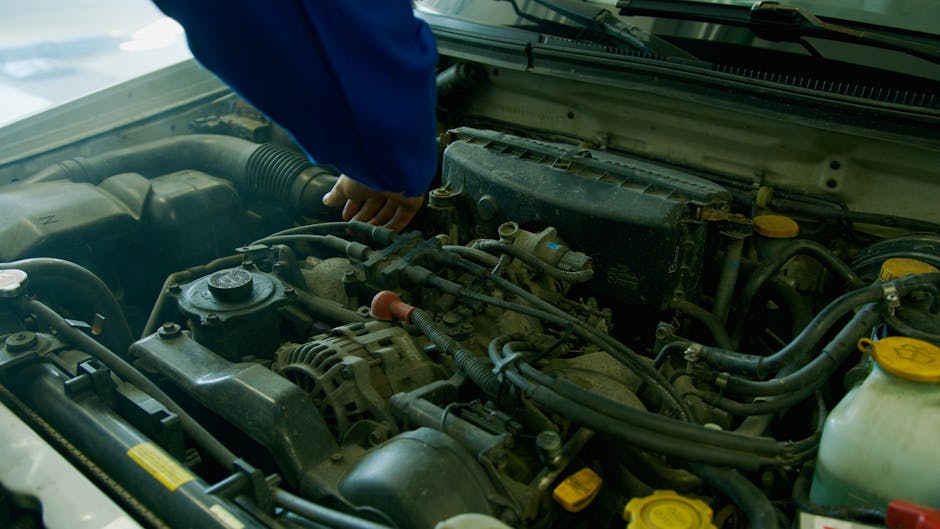
Building or Modifying a Car for Racing
- Choose the right base – Civic or Fiesta (front-drive), Miata or BMW E36 (rear-drive), WRX STI (AWD). Pick parts availability over street cred.
- Budget honestly – whatever you think it costs, double it, then add 20 %.
- Prioritise suspension & brakes – they drop lap times faster than horsepower.
- Weight reduction – cheapest speed: pull carpet, swap to lightweight wheels.
- Reliability upgrades – cooling, oil baffling, fresh gaskets beat big turbos.
Deep-dive: The Complete Guide to Building a Racing Car from Scratch.
Essential Pre-Track Checklists
Skip these and your debut ends on the tow truck.
- Driver fit – seat, belts, exit drill (<10 s from both doors).
- Fluids – fresh oil, coolant, brake, gearbox. Unknown history? Replace.
- Brake system – inspect pads/lines, bleed, torque wheels.
- Wheel alignment – at minimum toe plates; ideal is corner-weighted setup.
- Hubs & bearings – check for play; replace if doubtful.
- Nut-and-bolt – tighten, paint-mark, recheck after first session (use Viz-Torque).
- Spare consumables – pads, fluids, belts, simple tools.
- Numbers & decals – required by your club.
First get comfortable at HPDEs before entering competition school. More prep tips: Auto Racing.
The Ultimate Racing Car Guides to Setup and Tuning
Great setups aren’t guesswork. Follow Plan → Do → Review: set a goal, change one variable, test, log results.
Suspension: The Key to Mechanical Grip
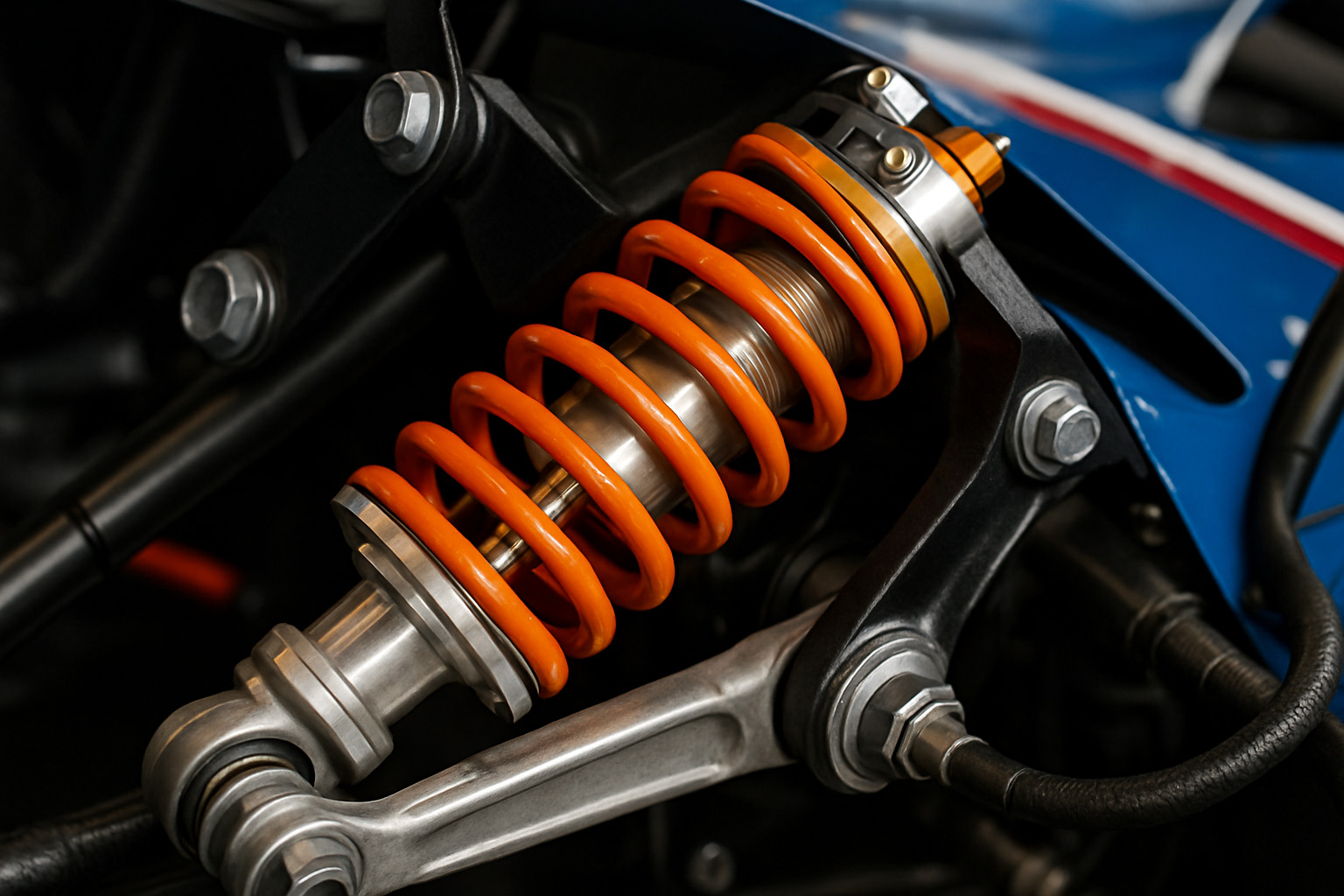
- Camber – slight negative keeps tread flat in corners.
- Toe – toe-in stabilises, toe-out sharpens turn-in.
- Caster – more positive adds high-speed stability and corner weight transfer.
- Springs & dampers – stiffest end loses grip first; balance them.
- Ride height – lower CG vs. clearance; avoid bottoming.
Explore: Race Car Suspension Tuning.
Aerodynamics & Brake Bias
Small aero tweaks pay off even for club racers.
- Front & rear wings / splitters – add downforce, trade some top speed.
- Grill tape – reduces drag; watch temps.
- Brake bias – too much rear = spins; too much front = long stops. Aim for straight-line stability.
More detail: race car aerodynamics and Brake Bias Guide.
Optimising Tires
Tires are where theory meets tarmac.
- Cold vs. hot pressures – set in pits, verify after 3-5 laps.
- Temperature spread – even temps = good camber; hot inside = too much negative.
- Contact patch – everything you change targets this postcard-sized area.
Learn more with the Master Your Tyres course and log every run on a run sheet. Telemetry helps: Race Car Telemetry Systems.
The Feedback Loop: A Systematic Path to Faster Laps
Fast laps come from disciplined experiments, not hope laps. Before each session ask, “What single thing are we testing?”
Driver Feedback in Setup
Data shows numbers; only you feel balance.
- Break each corner into entry, mid, exit when describing issues.
- Translate “loose on exit” into actionable items: rear spring softer? more rear wing? less throttle aggression?
- A predictable car boosts confidence—and confidence drops lap times.
Try our Driver Experience Programs to sharpen communication.
Common Mistakes to Avoid
- Chasing power before grip or brakes.
- Skipping weight reduction—it’s free speed.
- Changing multiple variables—clouds results.
- No notes—every session without data is wasted.
- Ignoring comfort—pain equals poor inputs.
For deeper reading: Chassis Setup Guide and Advanced Car Driving Techniques.
Frequently Asked Questions about Racing Car Setup
I’m a complete beginner—where do I start?
Run the baseline setup from the manufacturer or your club’s handbook. Drive several sessions, observe behaviour, then adjust one parameter at a time aiming for a neutral balance.
Do sim-racing skills transfer to real tracks?
Yes. Quality sims replicate camber, toe, brake bias, and aero effects accurately. They’re cheap, limitless practice that builds the intuition you’ll use on a real circuit.
What matters more: setup or driving technique?
In the early days, smooth, repeatable technique trumps tweaks. Once lap times are consistent, begin fine-tuning the car to suit your style.
Conclusion
Your journey from beginner to track-day hero doesn’t end here—it’s just getting started. These racing car guides have shown you that becoming a skilled racer isn’t about luck or natural talent alone. It’s about understanding the science behind speed and applying it systematically.
Safety is your foundation. Every modification, every adjustment, every lap starts with proper safety gear and a well-prepared car. Your helmet, fire suit, and roll cage aren’t just regulations—they’re your lifelines. Never compromise on these fundamentals.
Preparation beats inspiration every time. The fastest drivers aren’t necessarily the most naturally gifted. They’re the ones who approach each session with clear goals, meticulous preparation, and systematic thinking. 99% of amateur racers forget to set objectives for their track sessions. Don’t be part of that statistic.
The beauty of race car setup lies in its predictability. When you change one variable at a time, record your data religiously, and listen to what your car is telling you, patterns emerge. That mysterious understeer becomes manageable. The tricky corner exit suddenly clicks. Your lap times drop consistently.
Your car is your partner, not your opponent. Learning to communicate with it through suspension adjustments, tire pressures, and brake bias creates a symbiotic relationship. When you understand how camber affects cornering grip or how ride height influences aerodynamics, you’re not just driving—you’re orchestrating a mechanical symphony.
The feedback loop between driver and machine is where the magic happens. Your ability to translate the car’s behavior into actionable data, combined with systematic experimentation, creates genuine improvement. It’s not about throwing parts at problems or hoping for breakthrough moments.
Whether you’re perfecting your setup in a simulator or preparing for your first track day, every professional started exactly where you are now. The difference between a weekend warrior and a competitive racer isn’t just talent—it’s the willingness to learn, adapt, and approach each session as a student.
At Car News 4 You, we’re passionate about helping you open up your potential. The thrill of racing comes from mastery, not just speed. Keep experimenting, keep learning, and most importantly, keep that systematic approach we’ve outlined here.
Explore our comprehensive Resource Guides for more specialized knowledge. Your change from novice to skilled competitor is just beginning, and we’re here to guide you every step of the way.

